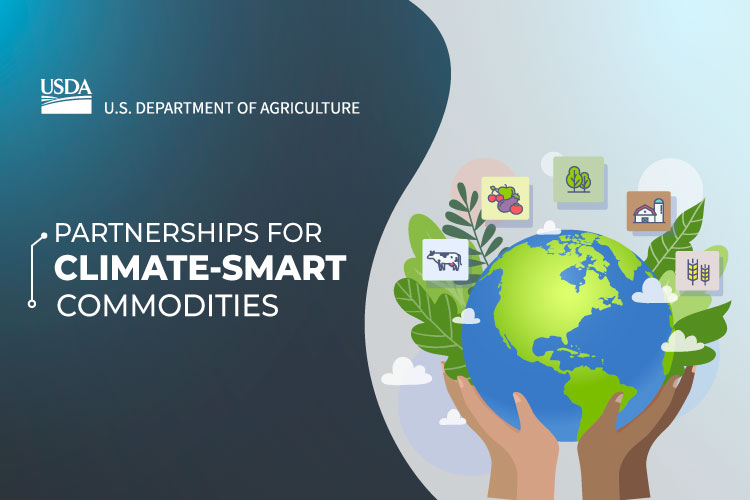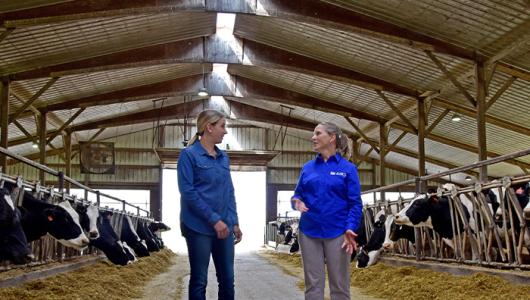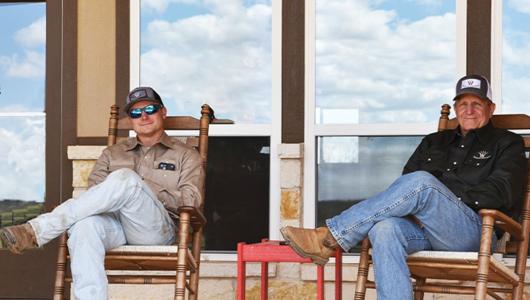Effective beginning 5/20/2025: Please note this site is under review and content may change.
As farmers, ranchers and forest landowners, you know firsthand the impacts of climate change and how it is affecting your operations. You see it in prolonged droughts, dwindling freshwater supplies and more severe floods. At USDA, it’s our job to help you navigate these challenges, and persevere, because the health and longevity of American agriculture is critical to our future.
USDA is implementing a broad strategy to support America’s farmers and ranchers and to position U.S. agriculture and forestry as global leaders in tackling climate change. At the same time, we can help create new markets and revenue streams to benefit you, your operations and your community.
To succeed, climate-smart agriculture must work for agriculture and forestry; that’s why we’re committed to an approach that is voluntary, incentive-based and producer-led. Our goal at USDA is to build something with you that works for you and the environment.
This fall, USDA released grants selected under Partnerships for Climate-Smart Commodities. We’re putting more than $3.1 billion into helping farmers, ranchers and forest owners through the funding of 141 pilot projects across the country that will expand and create new markets for American producers who grow their commodities in a climate-smart way. We’re supporting farmer cooperatives; commodity groups; nonprofit organizations; businesses; government entities; and others as they work together to come up with ways to help you do that. We want to make it easier for you to take that first step into climate-smart agriculture, or to build on the work you’re already doing. We want to provide the tools and mechanisms you need to quantify and measure the impacts.

When it comes to climate-smart agriculture, we want to ensure that we consider equity; that is, that every farmer, rancher and forest owner – young, old, large, small and underserved – have an opportunity to participate. That’s why projects funded through this effort are required to have meaningful involvement from small, medium and underserved producers.
Today I’m in Texas, at AgriLife Research and Extension Center, visiting with our partners from the University of Texas at Arlington, Texas A&M AgriLife, Tarleton State University and the University of Missouri to hear about a newly funded project that will work to provide small and underserved soybean producers incentives to use climate-smart practices and to be a part of developing markets and promoting climate-smart soybeans.
Also here in Texas, as Secretary Vilsack highlighted on Monday at an event at Tuskegee University, the University of Texas Rio Grande Valley and other partners are piloting agrivoltaics (using land for both agriculture and solar power) to measure and evaluate greenhouse gas benefits and promote equitable, climate-smart commodity market development for Hispanic farmers and ranchers. Partners will also provide direct financial and culturally relevant technical assistance to participants to implement these systems.
At the same event, the Secretary highlighted a project from the InterTribal Buffalo Council and other partners. They plan to work with 76 Tribes to incentivize their use of climate-smart practices related to buffalo herds. The Tribal Buffalo Market Initiative plans to assist Tribes in marketing their buffalo as a climate-smart commodity, develop sustainable programs for underserved Tribal buffalo producers and create a Tribally led national strategy for education and outreach of buffalo as a climate-smart product.
We are also lifting up other projects across the nation, like a project from the National Black Growers Council. They plan to work with underserved farmers to test and apply regenerative agricultural practices and determine which are best suited for various regions and farm types. Once complete, they plan to scale up participation to include additional farmers, providing incentives to increase adoption of regenerative agricultural practices and leveraging market data to market climate-smart commodities and sell products to corporate partners who need to meet corporate sustainability goals.
When USDA embarked on this effort, we knew we wanted to attract applicants from across the country and across agricultural commodities. We designed the program to offer flexibility in terms of match requirements, ample time for applicants to assemble applications, and certainty that grants were appropriately sized to meet the scale and needs of a diverse applicant pool.
We anticipate the Partnerships for Climate Smart Commodities funding will result in:
- New opportunities for expanded markets and revenue streams for farmers and ranchers who want to engage in climate-smart production.
- More than 60,000 farms reached, encompassing more than 25 million acres of working land engaged in climate-smart production practices, like cover crops, no-till and nutrient management.
- More than 60 million metric tons of carbon dioxide equivalent sequestered over the lives of the projects. This is equivalent to removing more than 12 million gasoline-powered passenger vehicles from the road for one year.
We are eager to see this effort translating into meaningful results for farmers, ranchers and foresters, climate-smart production and mitigating climate change.
Learn more about Partnerships for Climate-Smart Commodities on our website, where you’ll find the full list of projects, frequently asked questions, our Climate Solutions video and other information.


